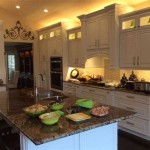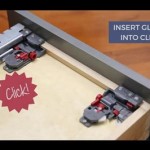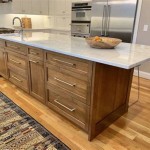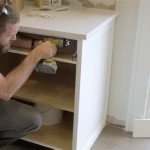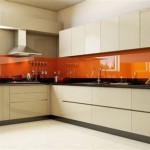DIY Concrete Kitchen Cabinets: A Comprehensive Guide
Concrete kitchen cabinets offer a unique blend of industrial chic and modern minimalism. While often perceived as a high-end, professionally installed feature, concrete cabinets can be a feasible DIY project for experienced home renovators. This guide provides a detailed overview of the process, covering material selection, formwork construction, concrete mixing and pouring, finishing, and installation.
Planning and Design: Careful planning is paramount. Accurate measurements of the desired cabinet dimensions are crucial for constructing the forms. Consider the cabinet layout, including the number of cabinets, their sizes, and the placement of shelves or drawers. Sketching a detailed plan will help visualize the project and ensure all components fit together seamlessly.
Material Selection: Choosing the right materials significantly impacts the project's success. Melamine-coated melamine is a popular choice for formwork due to its smooth surface, durability, and resistance to moisture. Ensure the melamine is thick enough to withstand the pressure of the concrete. Standard concrete mix is suitable for most applications, but consider adding reinforcing fibers for increased strength and crack resistance. Release agents are essential for preventing the concrete from adhering to the forms.
Formwork Construction: The formwork creates the mold for the concrete and determines the final shape and size of the cabinets. Precise cutting and assembly are critical. Use a table saw or circular saw with a guide for straight cuts. Assemble the forms using screws and wood glue for a strong, leak-proof structure. Internal supports and bracing may be necessary for larger cabinets to prevent bowing or deformation during the concrete pour. Reinforce corners with extra bracing and sealant to prevent leakage.
Concrete Mixing and Pouring: Follow the manufacturer's instructions for mixing the concrete. Achieving the correct consistency is vital. The mix should be pourable but not overly watery, resembling thick pancake batter. Pour the concrete slowly and steadily into the forms, using a vibrating tool to consolidate the mix and eliminate air pockets. Overfilling the forms should be avoided. Allow adequate time for the concrete to cure before removing the forms.
Curing: Proper curing is essential for achieving maximum concrete strength and durability. Keep the concrete moist for several days after pouring. Cover the forms with plastic sheeting or damp burlap to prevent premature drying. The curing time varies depending on the concrete mix and ambient temperature but generally takes around 28 days to reach full strength.
Form Removal and Finishing: Once the concrete has fully cured, carefully remove the forms. Minor imperfections can be addressed using a concrete grinder or sandpaper. For a polished look, progressively finer grits of sandpaper can be used to achieve a smooth, even surface. Seal the concrete with a concrete sealer to protect it from stains and moisture.
Installation: Concrete cabinets are heavy, so proper installation requires careful planning and execution. Reinforced wall framing may be necessary to support the weight. Use appropriate fasteners and mounting hardware designed for concrete. Ensure the cabinets are level and securely fastened to the wall. Consider using shims to adjust the cabinet position and ensure proper alignment.
Doors and Hardware: Choosing the right doors and hardware complements the aesthetic of concrete cabinets. Options range from sleek, modern hardware to rustic, industrial styles. Custom-made doors can be fabricated from various materials, including wood, metal, or glass. Standard cabinet hinges and drawer slides may require modification to accommodate the thickness of the concrete.
Considerations: Working with concrete can be messy and physically demanding. Wear appropriate safety gear, including gloves, eye protection, and a dust mask. Ensure adequate ventilation during the mixing and pouring process. Seek professional assistance if needed, particularly for complex designs or heavy lifting.
Alternative Approaches: For those seeking a simpler DIY option, concrete overlays can be applied to existing cabinets. This method involves applying a thin layer of concrete to the cabinet surfaces, creating a concrete-like finish without the need for extensive formwork. Precast concrete panels offer another alternative. These panels are pre-fabricated to specific dimensions and can be installed similarly to traditional cabinets. However, precast panels require specialized equipment for lifting and installation.
Maintenance: Concrete cabinets require minimal maintenance once sealed. Clean with a damp cloth and mild detergent as needed. Avoid abrasive cleaners or harsh chemicals that can damage the sealer. Reapply sealer periodically to maintain protection against stains and moisture.

Will Concrete Cabinetry Bring More Strength To The Kitchen

Concrete Kitchen Cabinets Bold And Unusual Ideas In Modern Homes

My Paradissi Concrete Kitchen Rustic Cabinets

Homemade Modern Ep86 Kitchen Cabinets

Kitchen Counters Concrete The Ly Indestructible Option

Sidebar Content

120 Best Concrete Kitchen Ideas Design Countertops

Homemade Modern Ep87 Concrete Kitchen Countertops

Diy Concrete Countertop Gray House Studio

Diy Concrete Counters With Waterfall Ends Overlay
Related Posts


